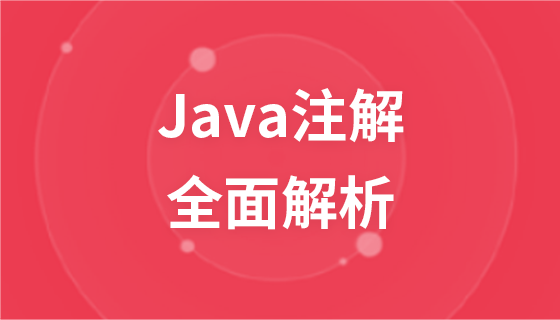
程式碼示範:##
/**
* <p>
* start() 和 run() 的比较
* </p>
*
* @author 踏雪彡寻梅
* @version 1.0
* @date 2020/9/20 - 16:15
* @since JDK1.8
*/public class StartAndRunMethod { public static void main(String[] args) { // run 方法演示
// 输出: name: main
// 说明由主线程去执行的, 不符合新建一个线程的本意
Runnable runnable = () -> {
System.out.println("name: " + Thread.currentThread().getName());
};
runnable.run(); // start 方法演示
// 输出: name: Thread-0
// 说明新建了一个线程, 符合本意
new Thread(runnable).start();
}
}复制代码run 方法不會啟動一個新執行緒。 (錯誤方式)
start 方法會啟動一個新執行緒。 (正確方式)
start 方法可以啟動一個新執行緒。
方法之後, 當前線程(通常是主線程)會請求JVM 虛擬機器如果有空閒的話來啟動一下這邊的這個新線程。 方法,也不一定能夠立刻的啟動執行緒。 方法呼叫之後,並不意味著這個方法已經開始運作了。它可能稍後才會運行,也很有可能很長時間都不會運行,比如說遇到了飢餓的情況。 方法,而線程2 後調用了start 方法,卻發現線程2 先執行線程1 後執行的情況。 方法的順序並不能決定真正執行緒執行的順序。 方法會牽扯到兩個執行緒。 方法,第二個才是新的線程。 就已經是子線程去執行了,這個語句其實是主線程或者說是父線程來執行的,執行之後才去建立新線程。 start 方法建立新執行緒的準備工作
# 方法中的代碼。 需要注意: 不能重複的執行start 方法
/**
* <p>
* 演示不能重复的执行 start 方法(两次及以上), 否则会报错
* </p>
*
* @author 踏雪彡寻梅
* @version 1.0
* @date 2020/9/20 - 16:47
* @since JDK1.8
*/public class CantStartTwice { public static void main(String[] args) {
Runnable runnable = () -> {
System.out.println("name: " + Thread.currentThread().getName());
};
Thread thread = new Thread(runnable); // 输出: name: Thread-0
thread.start(); // 输出: 抛出 java.lang.IllegalThreadStateException
// 即非法线程状态异常(线程状态不符合规定)
thread.start();
}
}复制代码 一旦開始執行,執行緒狀態就從最開始的New 狀態進入到後續的狀態,比如說Runnable,然後一旦執行緒執行完畢,執行緒就會變成終止狀態,而終止狀態永遠不可能再回回去,所以會拋出以上異常,也就是說不能回到初始狀態了。這裡描述的還不夠清晰,讓我們來看看原始碼能了解的更透徹。 public synchronized void start() { /**
* This method is not invoked for the main method thread or "system"
* group threads created/set up by the VM. Any new functionality added
* to this method in the future may have to also be added to the VM.
*
* A zero status value corresponds to state "NEW".
*/
// 第一步, 检查线程状态是否为初始状态, 这里也就是上面抛出异常的原因
if (threadStatus != 0) throw new IllegalThreadStateException(); /* Notify the group that this thread is about to be started
* so that it can be added to the group's list of threads
* and the group's unstarted count can be decremented. */
// 第二步, 加入线程组
group.add(this); boolean started = false; try { // 第三步, 调用 start0 方法
start0();
started = true;
} finally { try { if (!started) {
group.threadStartFailed(this);
}
} catch (Throwable ignore) { /* do nothing. If start0 threw a Throwable then
it will be passed up the call stack */
}
}
}复制代码#第一步:啟動新執行緒時會先檢查執行緒狀態是否為初始狀態, 這也是上述拋出例外狀況的原因。即以下程式碼:
if (threadStatus != 0) throw new IllegalThreadStateException();复制代码
threadStatus 這個變數的註解如下,也就是說Java 的執行緒狀態最初始(還沒啟動)的時候表示為0:
/* Java thread status for tools, * initialized to indicate thread 'not yet started' */private volatile int threadStatus = 0;复制代码
第二步:將其加入線程組。即以下程式碼:
group.add(this);复制代码
第三步:最後呼叫start0() 這個native 方法(native 代表它的程式碼不是由Java 實現的,而是由C/C 實現的,具體實作可以在JDK 裡面看到,了解即可), 即以下程式碼:
boolean started = false;try { // 第三步, 调用 start0 方法
start0();
started = true;
} finally { try { if (!started) {
group.threadStartFailed(this);
}
} catch (Throwable ignore) { /* do nothing. If start0 threw a Throwable then
it will be passed up the call stack */
}
}复制代码@Overridepublic void run() { // 传入了 target 对象(即 Runnable 接口的实现), 执行传入的 target 对象的 run 方法
if (target != null) {
target.run();
}
}复制代码Thread 類別的run 方法,Thread 的run 方法會失效, 將會執行重寫的run 方法。
第二種: 傳入了target 物件(即Runnable 介面的實作),執行Thread 的原有run 方法接著接著執行target 物件的run 方法。
總結:
run 方法就是一個普通的方法, 上文直接去執行run 方法也就是相當於我們執行自己寫的普通方法一樣,所以它的執行緒就是我們的主執行緒。 run 方法,而是要呼叫start 方法,可以間接的呼叫run 方法。 相關學習推薦:#java基礎
以上是細品 Java 中啟動執行緒的正確和錯誤方式的詳細內容。更多資訊請關注PHP中文網其他相關文章!



